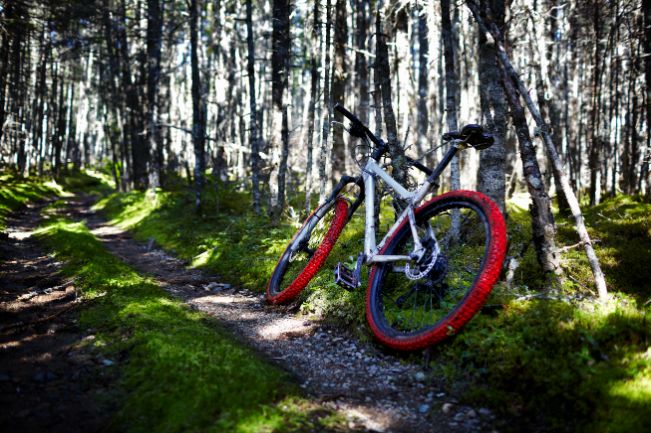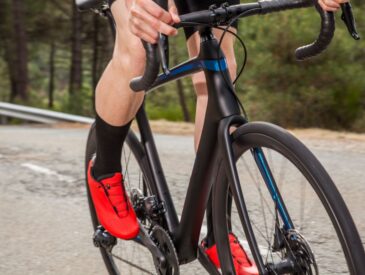The first thing you should do when riding a trail is tell someone where you’re going and what time to expect you back. Many cycling apps also allow you to share a tracking link with loved ones.
Keep in mind that dogs are not allowed on some trails. Bring a bag to carry out dog poop and be respectful of other trail users.
Know the Terrain
Bike trails are made up of a variety of terrain. They can be sandy, rocky or hardpacked, and the trail surface can change with the seasons, weather and location. Some trails may be slick and muddy, and others are smooth and fast.
Red trails are ‘rollable’ you can ride them fast and get a lot of airtime, but you can choose to stop and rest at any time. Difficult (black) trails have a few unavoidable rocks or roots, tricky twisty descents and a variety of built features including big jumps and berms.
On trails shared by hikers, yield to those going uphill by walking to the side. Horses can also be startled by bicycles, so be friendly and make eye contact as you approach. They’ll probably let you know it is safe to pass. Always be prepared to change a flat tire. A spare tube and a tool kit are essential items to carry on all rides.
Know Your Gear
When biking on trails, be aware of the equipment you’re using. You should have the necessary safety gear, including a helmet, and a bike that’s appropriate for the terrain. A multi-tool, patch kit and mini-pump are essential to have in case of trailside repairs. You should also bring water and a snack to stay hydrated and fueled during your ride.
Remember to use a bell or your voice when passing other trail users. This is a courteous gesture that helps other trail users to hear you and gives them a chance to anticipate your movements. Some trail users, such as hikers or runners, may prefer to step to the side for a biker to pass.
Keep in mind that many trails are home to wild animals or zones where livestock graze. Be sure to keep a safe distance from any animal and always use a bear bell if in bear country.
Know the Rules of the Road
Although trails are away from the busy roads, you will still encounter other people on your bike rides. As with road riding, there are certain rules that all trail users should abide by to make sure everyone stays safe and has fun.
Generally speaking, faster-moving trail users should pass on the left. However, some trails, especially singletrack, are narrow with only enough room for one bike. On these trails, pass slowly and give a trail walker or hiker a chance to move over. On steep trails, a rider going uphill should yield to other trail users so they don’t lose their momentum or get stuck behind a slower climber.
Finally, remember that other trail users may not see you, especially if they are wearing dark clothing or in low-light conditions. Be visible by using lights and brightly colored clothing, and use a bell to alert others to your presence. Say “hello” and wave to other trail users; it makes for a happier trail experience for all!
Know the Rules of the Trail
As with any sport, there are certain rules to follow when you’re biking trails. While they may seem a bit basic, following these guidelines will ensure that you’re safe and respect other trail users.
For example, trail etiquette dictates that downhill riders yield to uphill riders because it’s much more difficult for a rider going uphill to maneuver their bike on steep inclines. Additionally, it’s important to always communicate your presence when passing slower riders. This can be done by calling out a friendly greeting, ringing your bell, or simply saying “on your left” as you approach them from behind.
In addition, be mindful of the impact that you’re having on the trail and its ecosystem. Don’t cut corners or shortcuts that will destroy vegetation and create erosion channels, and don’t ride in areas that are closed for a reason. These little things will make your time on the trail a whole lot more fun for everyone!




